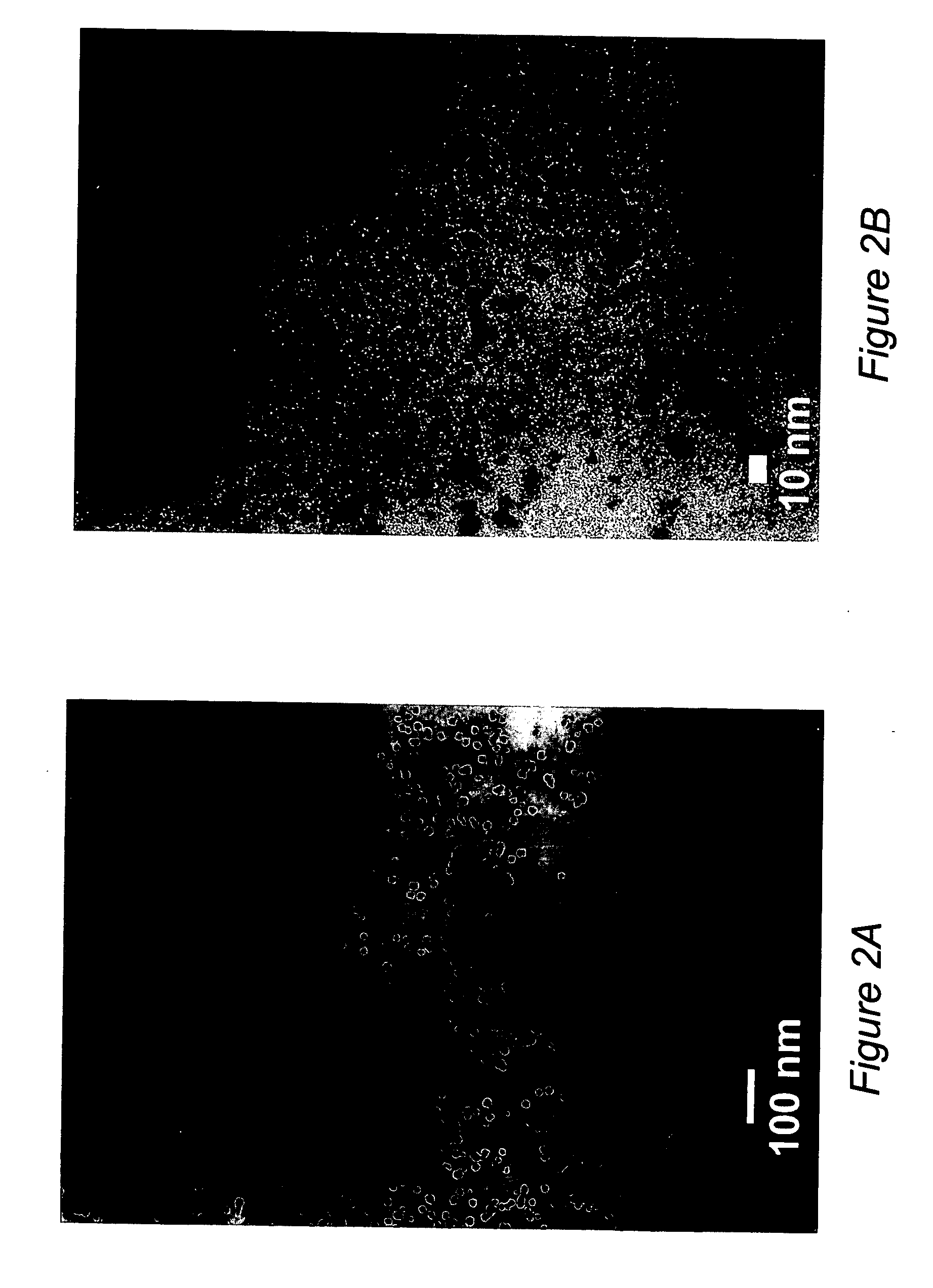Oxidatively stable magnetic metal nanoparticles prepared with copolymers containing phthalonitrile moieties, and polymer-metal complexes and their conversion to oxidatively-stable metal nanoparticles
- Summary
- Abstract
- Description
- Claims
- Application Information
AI Technical Summary
Benefits of technology
Problems solved by technology
Method used
Image
Examples
example 1
[0067] A block copolymer was synthesized through the sequential anionic polymerization of styrene and tert-butyldimethylsilyloxystyrene to afford poly(styrene-b-tert-butyldimethylsilyloxy-styrene). The silyl ether bonds of the copolymers were hydrolyzed under acidic conditions to afford poly(styrene-b-4-vinylphenol). The pendant phenols of the copolymer were chemically modified with 4-nitrophthalonitrile under basic conditions to afford poly(styrene-b-4-vinylphenoxyphthalonitrile). A stable suspension of metallic cobalt or iron nanoparticles were formed through the thermolysis of either dicobalt octacarbonyl or iron pentacarbonyl in concentrated solutions of toluene and poly(styrene-b-4-vinylphenoxyphthalonitrile). The nanoparticles were concentrated to a solid form and pyrolyzed in a tube furnace at 700° C. under an argon purge for four hours. Vibrating sample magnetometry indicates the nanoparticles are oxidatively stable and retain their high magnetizations (˜95-100 emu / g) for ov...
example 2
[0068] The invention provides a distinct advantage over conventional technology by affording magnetic nanoparticles prepared in copolymer solutions where the copolymers encase the metal nanoparticles. Upon pyrolysis, these material have high saturation magnetizations (at least 95-100 emu / g material) and oxidative stability under ambient conditions. Although these inventive nanoparticles are somewhat adhered together by the coatings after the pyrolysis step, much of the small nanoparticle size is retained. For the inventive materials of this example, the coasting are brittle and these material can be ground into nanoparticles which have diameters of about 200 nm. These inventive particles are sufficiently small to be coated with polymeric and / or biospecific groups, and used in biomedical applications. Testing of the inventive particles shows that their desirable magnetic properties are not lost after exposure to ambient conditions for over a year.
example 3
[0069] Oxidatively stable 10-12 nm cobalt nanoparticles having high saturation magnetizations were formed via the pyrolysis of cobalt nanoparticles encapsulated with poly(styrene-b-4-vinylphenoxyphthalonitrile).
PUM
| Property | Measurement | Unit |
|---|---|---|
| Temperature | aaaaa | aaaaa |
| Temperature | aaaaa | aaaaa |
| Composition | aaaaa | aaaaa |
Abstract
Description
Claims
Application Information
 Login to View More
Login to View More - R&D
- Intellectual Property
- Life Sciences
- Materials
- Tech Scout
- Unparalleled Data Quality
- Higher Quality Content
- 60% Fewer Hallucinations
Browse by: Latest US Patents, China's latest patents, Technical Efficacy Thesaurus, Application Domain, Technology Topic, Popular Technical Reports.
© 2025 PatSnap. All rights reserved.Legal|Privacy policy|Modern Slavery Act Transparency Statement|Sitemap|About US| Contact US: help@patsnap.com



